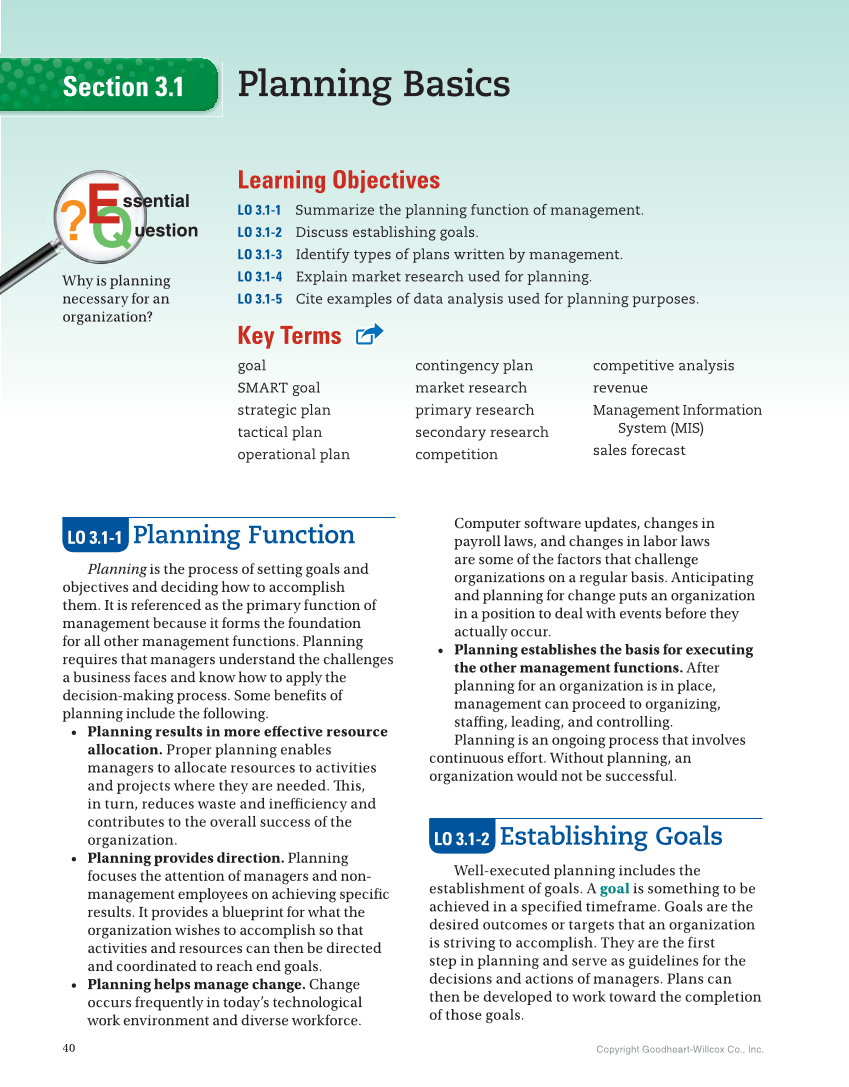Why is planning necessary for an organization? Learning Objectives LO 3.1-1 Summarize the planning function of management. LO 3.1-2 Discuss establishing goals. LO 3.1-3 Identify types of plans written by management. LO 3.1-4 Explain market research used for planning. LO 3.1-5 Cite examples of data analysis used for planning purposes. Key Terms goal SMART goal strategic plan tactical plan operational plan contingency plan market research primary research secondary research competition competitive analysis revenue Management Information System (MIS) sales forecast Section 3.1 Planning Basics LO LO 3.1-1 3 . 1 -1 Planning Function Planning is the process of setting goals and objectives and deciding how to accomplish them. It is referenced as the primary function of management because it forms the foundation for all other management functions. Planning requires that managers understand the challenges a business faces and know how to apply the decision-making process. Some benefits of planning include the following. • Planning results in more effective resource allocation. Proper planning enables managers to allocate resources to activities and projects where they are needed. This, in turn, reduces waste and inefficiency and contributes to the overall success of the organization. • Planning provides direction. Planning focuses the attention of managers and non- management employees on achieving specific results. It provides a blueprint for what the organization wishes to accomplish so that activities and resources can then be directed and coordinated to reach end goals. • Planning helps manage change. Change occurs frequently in today’s technological work environment and diverse workforce. Computer software updates, changes in payroll laws, and changes in labor laws are some of the factors that challenge organizations on a regular basis. Anticipating and planning for change puts an organization in a position to deal with events before they actually occur. • Planning establishes the basis for executing the other management functions. After planning for an organization is in place, management can proceed to organizing, staffing, leading, and controlling. Planning is an ongoing process that involves continuous effort. Without planning, an organization would not be successful. LO LO 3.1-2 3 . 1 - 2 Establishing Goals Well-executed planning includes the establishment of goals. A goal is something to be achieved in a specified timeframe. Goals are the desired outcomes or targets that an organization is striving to accomplish. They are the first step in planning and serve as guidelines for the decisions and actions of managers. Plans can then be developed to work toward the completion of those goals. Copyright Goodheart-Willcox Co., Inc. 40
